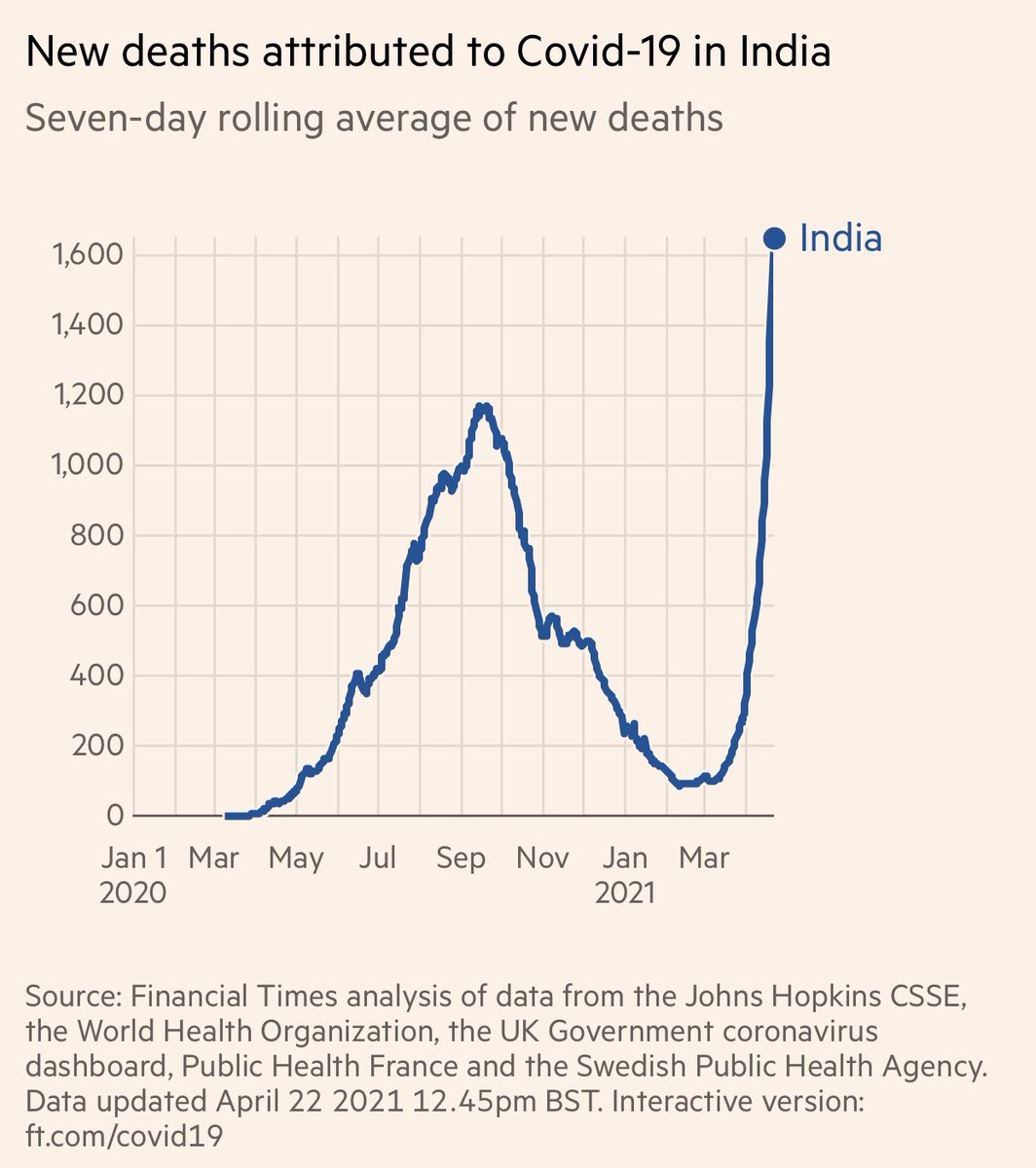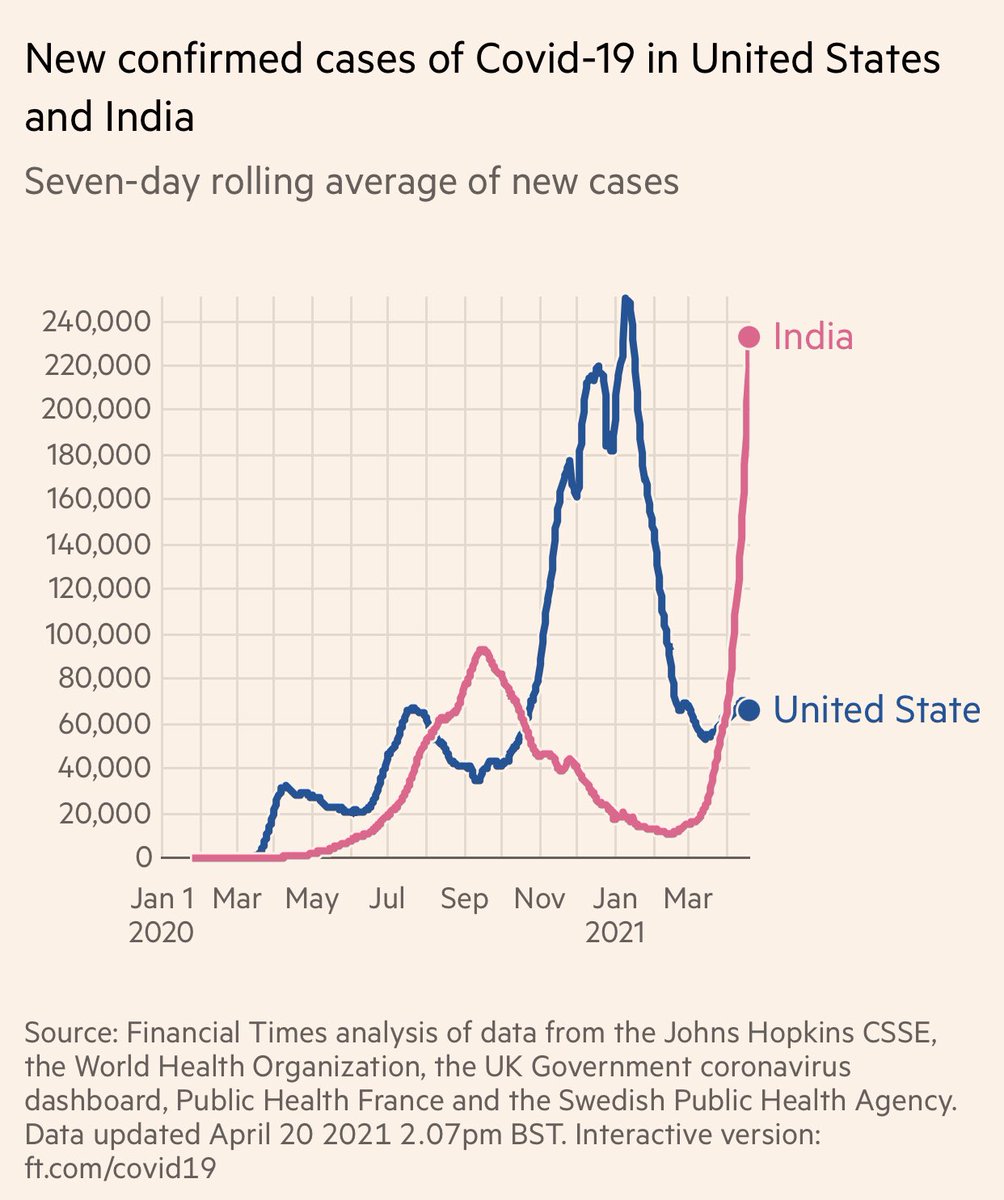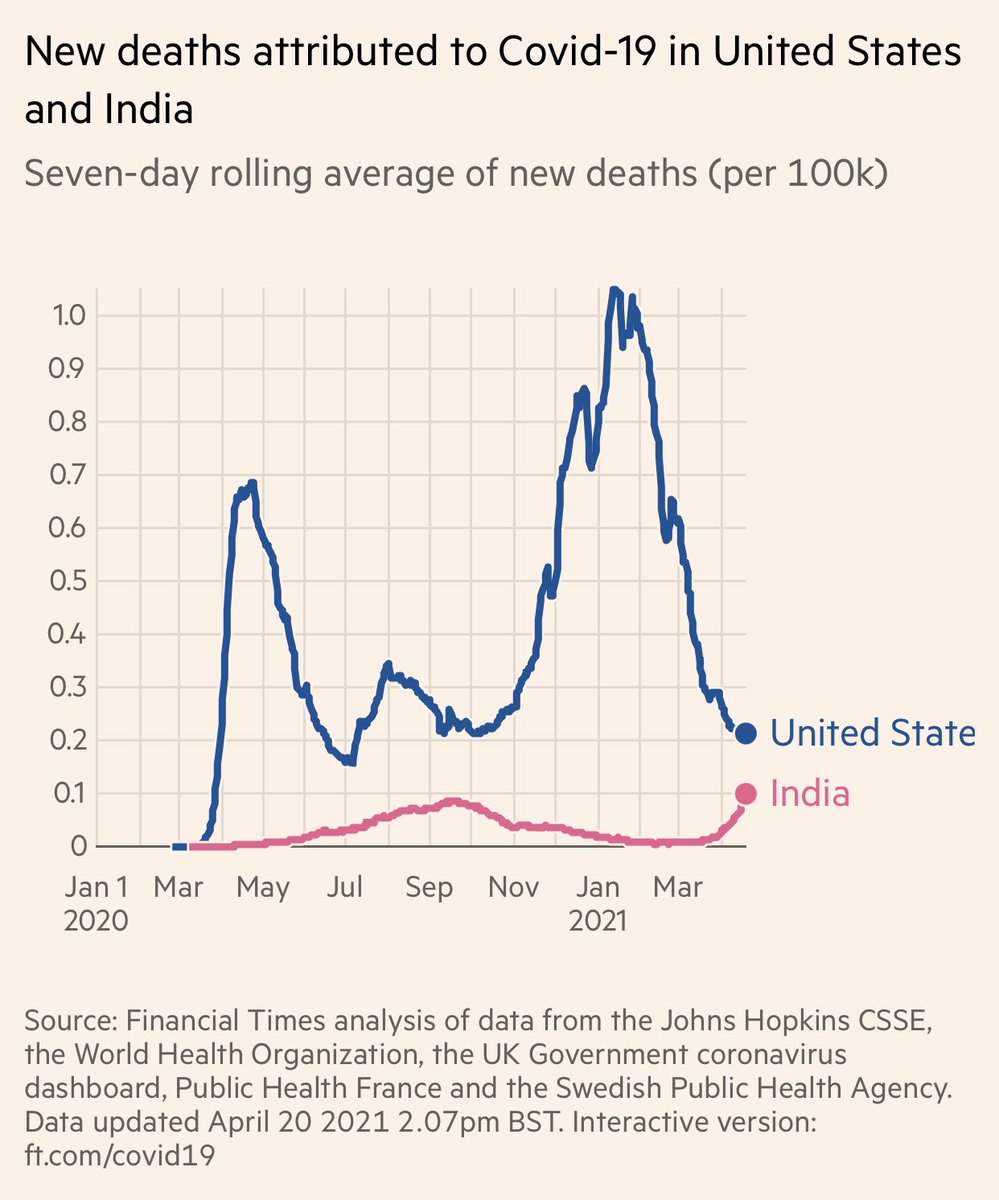
Studies were reporting 40-50% seroprevalence in big cities in India even by December. The same cities (eg. Delhi, Mumbai, Chennai) are now totally overwhelmed with COVID.
What does this mean? How could this even happen? nature.com/articles/d4158…
@SmritiMallapaty @nature
What does this mean? How could this even happen? nature.com/articles/d4158…
@SmritiMallapaty @nature
First, sampling in big cities could have been wrong and didn't estimate the true seroprevalence accurately even within each city, let alone India.
Second, even if 50% seroprevalence was true, that still leaves 50%.
50% of India still means 650 million people susceptible. Twice the size of the US population.
50% of India still means 650 million people susceptible. Twice the size of the US population.
Third, there was completed breakdown in masks and distancing measures since November. This contributed to high degree of simultaneous exposures.
Fourth the rise of mutant variants, likely ones that were much more transmissible person to person.
Fourth the rise of mutant variants, likely ones that were much more transmissible person to person.
Some combination of these factors can act in a feedback cycle. The end result is this.👇
https://twitter.com/vincentrk/status/1385723980770955268
One hopes that reinfections are not driving this wave. And that this is due to new infections in susceptible people. If reinfections with really bad variants are involved, that's ominous in terms of what it means for the rest of the world.
In any case, the present crisis must be addressed first. The analysis of why it happened can wait, except for urgent studies of variants and role in reinfections and post vaccine infections.
https://twitter.com/VincentRK/status/1385638825142202372
• • •
Missing some Tweet in this thread? You can try to
force a refresh








